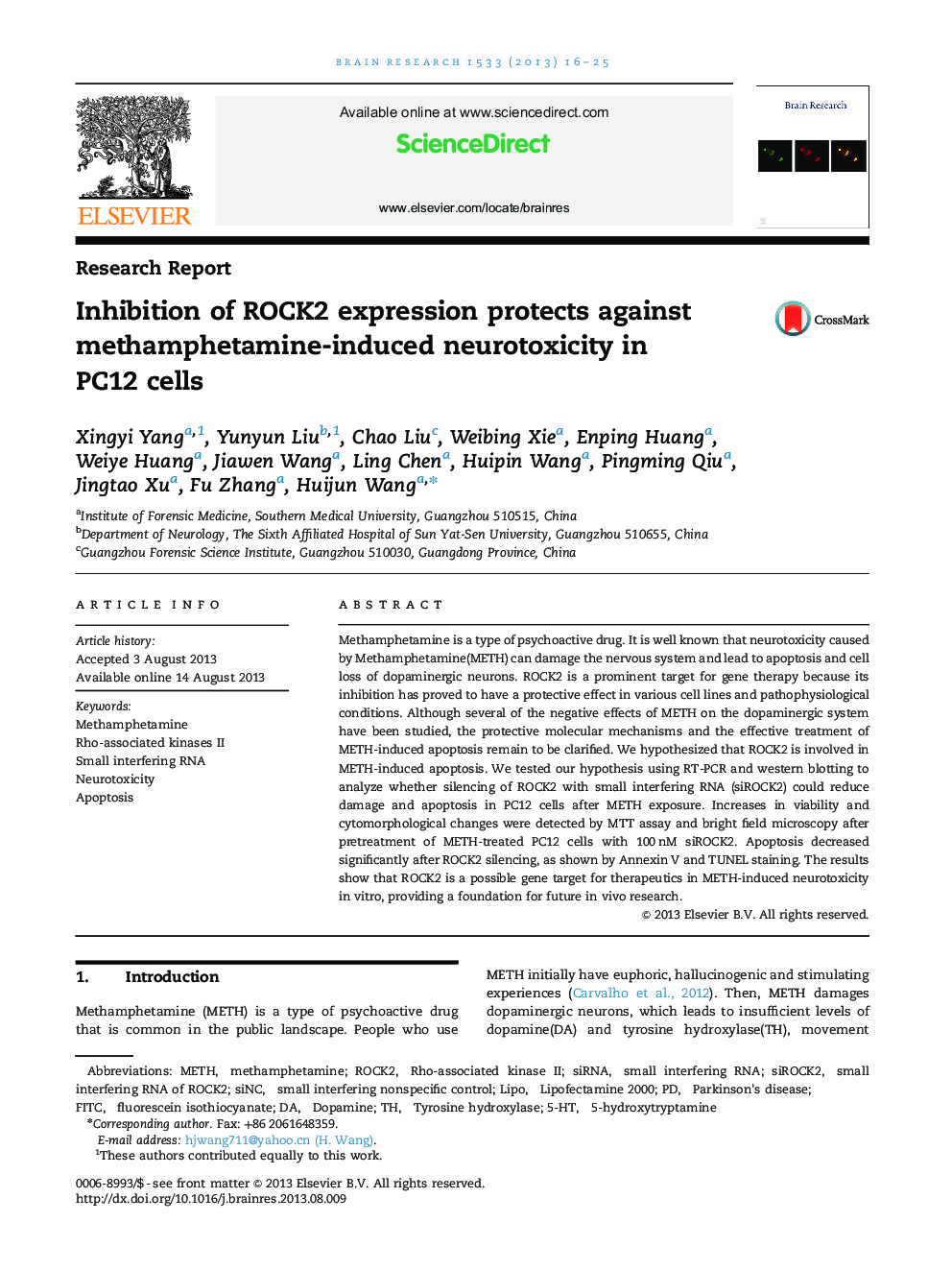| Article ID | Journal | Published Year | Pages | File Type |
|---|---|---|---|---|
| 4324527 | Brain Research | 2013 | 10 Pages |
•Several molecular mechanisms indicate ROCK2 participating in apoptosis.•Synthetic siROCK2 effectively suppressed ROCK2 mRNA expression in PC12 cells.•ROCK2 involve in METH-induced apoptosis in PC12 cells.•Knockdown of ROCK2 reverses neurotoxic and apoptotic damage induced by METH.
Methamphetamine is a type of psychoactive drug. It is well known that neurotoxicity caused by Methamphetamine(METH) can damage the nervous system and lead to apoptosis and cell loss of dopaminergic neurons. ROCK2 is a prominent target for gene therapy because its inhibition has proved to have a protective effect in various cell lines and pathophysiological conditions. Although several of the negative effects of METH on the dopaminergic system have been studied, the protective molecular mechanisms and the effective treatment of METH-induced apoptosis remain to be clarified. We hypothesized that ROCK2 is involved in METH-induced apoptosis. We tested our hypothesis using RT-PCR and western blotting to analyze whether silencing of ROCK2 with small interfering RNA (siROCK2) could reduce damage and apoptosis in PC12 cells after METH exposure. Increases in viability and cytomorphological changes were detected by MTT assay and bright field microscopy after pretreatment of METH-treated PC12 cells with 100 nM siROCK2. Apoptosis decreased significantly after ROCK2 silencing, as shown by Annexin V and TUNEL staining. The results show that ROCK2 is a possible gene target for therapeutics in METH-induced neurotoxicity in vitro, providing a foundation for future in vivo research.
